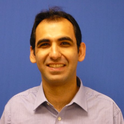Article
Tension stimulation drives tissue formation in scaffold-free systems
Nature Materials
(2017)
Abstract
Scaffold-free systems have emerged as viable approaches for engineering load-bearing tissues. However, the tensile properties of engineered tissues have remained far below the values for native tissue. Here, by using self-assembled articular cartilage as a model to examine the effects of intermittent and continuous tension stimulation on tissue formation, we show that the application of tension alone, or in combination with matrix remodelling and synthesis agents, leads to neocartilage with tensile properties approaching those of native tissue. Implantation of tension-stimulated tissues results in neotissues that are morphologically reminiscent of native cartilage. We also show that tension stimulation can be translated to a human cell source to generate anisotropic human neocartilage with enhanced tensile properties. Tension stimulation, which results in nearly sixfold improvements in tensile properties over unstimulated controls, may allow the engineering of mechanically robust biological replacements of native tissue.
Keywords
- Tissues
Disciplines
Publication Date
2017
DOI
10.1038/nmat4917
Publisher Statement
SJSU users: use the following link to login and access the article via SJSU databases.
Citation Information
Jennifer K. Lee, Le W. Huwe, Nikolaos Paschos, Ashkan Aryaei, et al.. "Tension stimulation drives tissue formation in scaffold-free systems" Nature Materials (2017) Available at: http://works.bepress.com/ashkan-aryaei/1/
